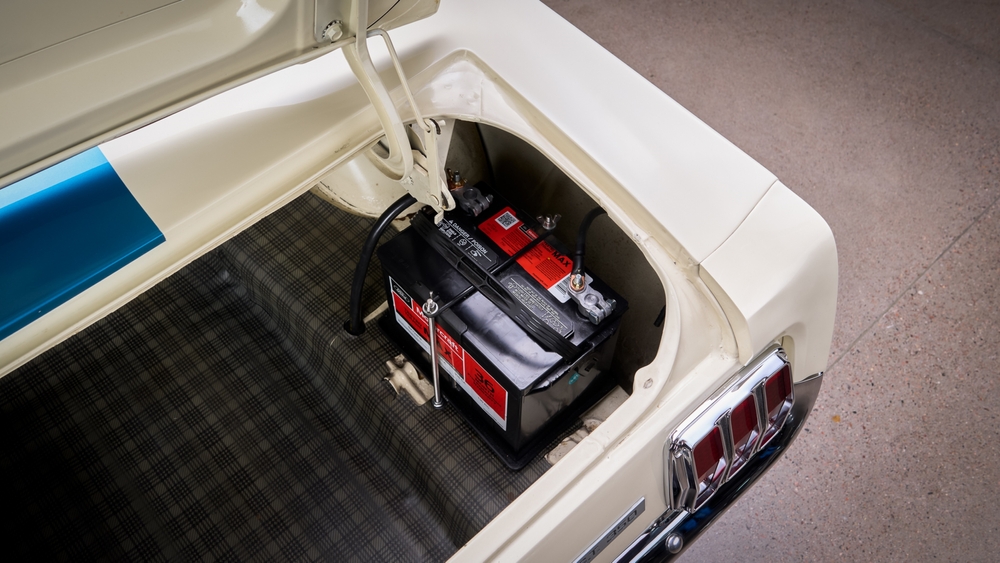When it comes to vintage racing cars, proper weight distribution is key to achieving optimal performance and handling. Over time, even the most carefully restored classics can develop balance issues that affect speed, stability, and control on the track. In this article, we’ll explore the top 15 weight distribution problems vintage racers face and how addressing them can help bring out the best in these iconic machines.
Contents
Excessive front-end weight

Vintage racing cars with too much front-end weight tend to understeer, as the front tires lose grip and the car struggles to turn. This can be caused by heavy engines or components placed in the front, which shifts the center of gravity forward, leading to sluggish handling and poor cornering.
Rear-heavy weight distribution

Cars with too much rear-end weight often experience oversteer, where the rear tires lose traction, making the car difficult to control, especially in corners. This imbalance is common in rear-engine vintage cars and requires careful weight distribution to prevent spin-outs during sharp turns.
Uneven side-to-side weight balance

If a vintage race car has an uneven distribution of weight from left to right, it will behave unpredictably in corners, with one side possibly losing grip before the other. This imbalance can destabilize the car during high-speed turns and compromise overall performance.
High center of gravity

A high center of gravity increases the risk of body roll and reduces cornering stability. In vintage race cars, heavy components mounted too high or tall body designs can raise the center of gravity, making the car prone to tipping or rolling during aggressive maneuvers.
Uneven weight between left and right wheels

When weight is not distributed evenly between the left and right wheels, handling becomes inconsistent, especially when braking or cornering. This issue can lead to uneven tire wear and make the car difficult to control, particularly on tight tracks.
Engine placement imbalance

The position of the engine significantly affects weight distribution. Front-engine cars may experience excess front-end weight, while rear-engine cars can have too much rearward weight, leading to handling issues. Correcting engine placement can restore balance between the axles for better handling and performance.
Fuel tank positioning

The location of the fuel tank plays a key role in maintaining consistent weight distribution as fuel is consumed. A poorly placed fuel tank, especially far from the car’s center, can cause shifting balance throughout a race, affecting handling mid-race as the fuel load decreases.
Driver’s seat too far forward or backward

The placement of the driver’s seat can alter the car’s overall weight distribution. If the seat is too far forward, it adds weight to the front, causing understeer. Conversely, a seat placed too far back can lead to oversteer. Ensuring optimal driver placement is essential for weight balance and control.
Overloaded front suspension

Excessive front-end weight overloads the front suspension, leading to poor handling, reduced braking efficiency, and increased body roll. This imbalance also stresses suspension components, leading to wear and making the car more difficult to control during high-speed driving.
Inadequate weight distribution after modifications

Vintage race cars often undergo modifications, but if these changes are not balanced, they can shift the car’s weight distribution. For instance, installing heavier brakes or a larger engine may disrupt the car’s original balance, leading to poor handling and reduced performance.
Light rear end with heavy front components

Cars with a significantly lighter rear end compared to the front can struggle with traction during acceleration and braking. A light rear end means less grip on the drive wheels, resulting in wheel spin and instability, especially when the front end is burdened with heavy components.
Uneven suspension spring rates

Different spring rates on a car’s suspension can create an uneven weight distribution during dynamic movements like cornering and braking. Uneven suspension can cause inconsistent tire contact, reducing grip and making the car harder to control, especially in challenging racing conditions.
Inconsistent tire pressure

Uneven tire pressure across the four tires can cause unequal weight distribution, making one side or corner of the car heavier than the others. This imbalance affects the car’s handling, especially during cornering, as it reduces the tire’s contact with the road, leading to instability.
Too much weight on one axle

If weight is concentrated too heavily on one axle, it can lead to poor handling, uneven tire wear, and reduced grip. This imbalance puts unnecessary stress on that axle, making the car less responsive, especially in fast corners or under heavy braking.
Battery location

A heavy battery located too far forward or backward in a vintage race car can upset its overall weight distribution. If the battery is placed at the front, it may cause understeer, while a rear-mounted battery could contribute to oversteer. Placing the battery in a balanced location is key to proper weight distribution.
This article originally appeared in MyCarMakesNoise.
More from MyCarMakesNoise
20 Easy Ways People Neglect Their Motorcycle’s Engine

Neglecting a motorcycle’s engine can lead to costly repairs and performance issues down the road. Many riders unintentionally overlook routine maintenance tasks, often resulting in unnecessary wear and tear. Read More
20 DIY Tire Maintenance Tips to Extend Tread Life and Save

Proper tire maintenance is essential not only for extending the life of your tires but also for improving vehicle performance and saving money in the long run. By following simple DIY tips, you can avoid premature wear and ensure your tires last longer. Read More
18 Vintage RVs That Are Now Highly Collectible and Worth Restoring

Vintage RVs offer a unique charm and a glimpse into the golden age of travel, where adventure met retro style. Many of these classic RVs have become highly collectible due to their distinctive designs, quality craftsmanship, and nostalgic appeal. Restoring these timeless vehicles not only preserves a piece of history but can also be a rewarding project for enthusiasts. Read More














